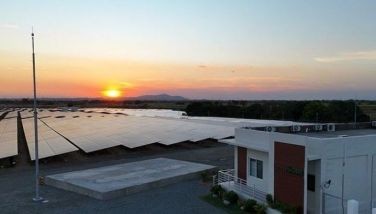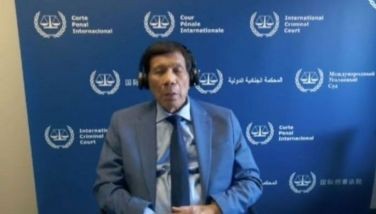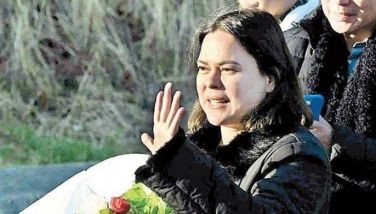Reforest and rewild

I had the good fortune of meeting two passionate tree lovers in the persons of Eugene Strong and Alvin Orbecido, who both work with the local government of Isabela City, Basilan province.
They handle the Isabela City Forest Park under a joint management agreement with Department of Environment and Natural Resources (DENR) Region 9. It is interesting that Isabela City is in Basilan but it is not part of BARMM. Rather, it is a part of Region IX along with Zamboanga peninsula.
I met them on the occasion of our tree planting activity, starting with 13,000 coffee seedlings to be planted this year under our Philippine Coffee Board Inc. (PCBI) and Isabela City Memorandum of Agreement (MOA).
The intermittent rains did not stop us from visiting the seedling nursery in Maligui, Isabela City as we walked under centennial trees, and over a bridge with a stream of gushing rain water underneath us. Though they have old mahogany trees, they also had old endemic varieties like the famous Basilan yakan, now endangered, and lauan (red and white), narra and prickly narra.
They propagate seedlings of these old tree varieties along with Robusta and Excelsa coffee varieties. Mr. Strong has promised to target having as many as 50,000 coffee seedlings up to next year, in line with our commitment to plant over 200,000 trees around the country.
The other observation we made at the Forest Park was the staff of Mr. Alvin – they were all women foresters! They gingerly put names and labels on the seedlings we asked for and made us sign our names on a logbook as we planted our own “legacy” trees in the park. Alvin says the male applicants prefer to work elsewhere, not in this forest park, though it is located just half hour from the city proper.
The lady foresters are on the job, potting seeds of the native trees and guiding us around the nursery. Kudos to these women tree huggers! They are graduates of Western Mindanao State University where Forestry seems to be a popular course.
It was a good afternoon spent under forest cover and learning about different species like the balete or banyan, a most popular tree due to legends about ghosts and other supernaturals that supposedly love its cool foliage and take refuge in it. Mr. Strong, however, demystifies the tall tale about the balete. He claims that historians believe the balete was a victim of fake news during the American occupation. Because balete has good heavy foliage, it can hold a “room” or ambient temperature of around 18 degrees Celsius if you stay underneath. This cool setting became a popular site for gatherings of the community people.
But the colonizers were suspicious of such strange gatherings or “meetings” and so stories spread about sightings of supernatural white ladies in balete trees, scaring the townsfolk and cutting short such gatherings under the misunderstood tree.
That legend also spread to Manila, where Balete Drive in Quezon City became an infamous avenue where motorists supposedly see strange white figures while passing through this road. Strong’s explanation may be true and the balete could be redeemed from a bad reputation.
These two tree-loving men are just too happy to share as many seedlings as you want and indulged us by sharing a few of each variety, which we hope the Bureau of Quarantine would let us carry across the seas. Otherwise, we would need to contain these species in Basilan and maybe in Sulu and Tawi-Tawi only, reachable by boat and not by air. We are also careful about moving soil from one area to another as these trees do survive in a potting medium of earth that may be a medium for biological security threats. We chose to let our Princess Kumala of Sulu take care of these seedlings.
But that did not stop us from gathering narra seeds from our tree planting sites during the day. We planted in private properties of Lee Roy Brown, Mr. Blue Ututalum in Panunsulan and in another area in Sta. Barbara which gathered Basilan’s youthful leaders to lead the activity.
These land owners also now make up the Isabela City Coffee Growers Association, and I was only too happy to swear them in as officers of the newly-formed coffee group.
You may ask – why Basilan? In a previous article written in April (my first visit) in this paper, I mentioned that Isabela City has chosen coffee over rubber, as you can grow coffee on these elevations and provide food to the citizens. Rubber, besides now being replaced by synthetic rubber in the market, does not give food but just latex, the raw material for tires and condoms. The local leaders have chosen to revive its coffee industry and in the process also plant shade trees for reforestation and rewilding.
It helps a lot that the foresters of the city are on the ball, for how can you succeed in reforestation efforts if you do not have the so-called supply chain or source of planting materials? It also helps that the city leaders are well-coordinated with national agencies like the DENR, and have preserved this forest park to keep a nursery of seedlings, ready to plant and ready for sharing with any interested party.
- Latest
- Trending
























